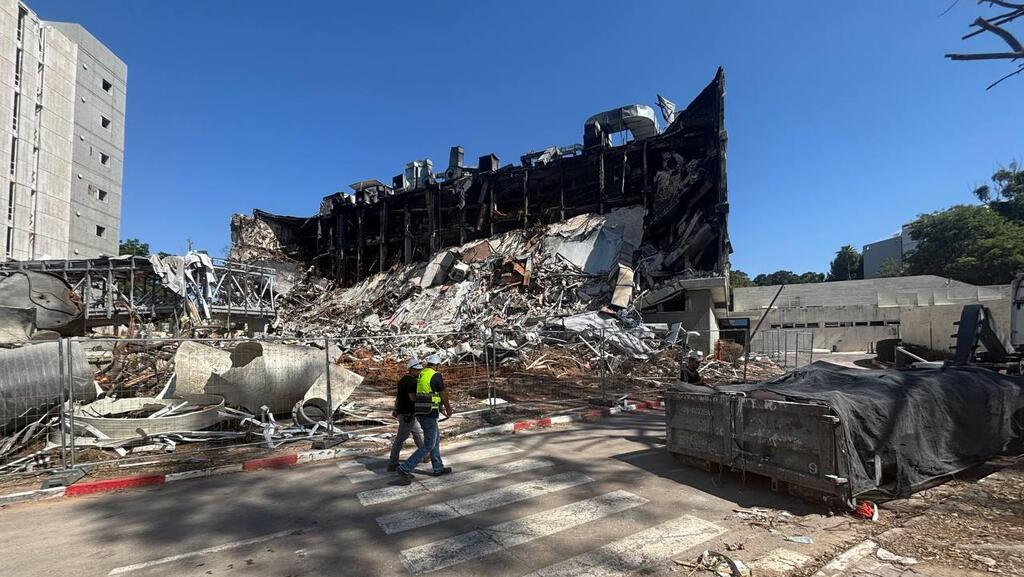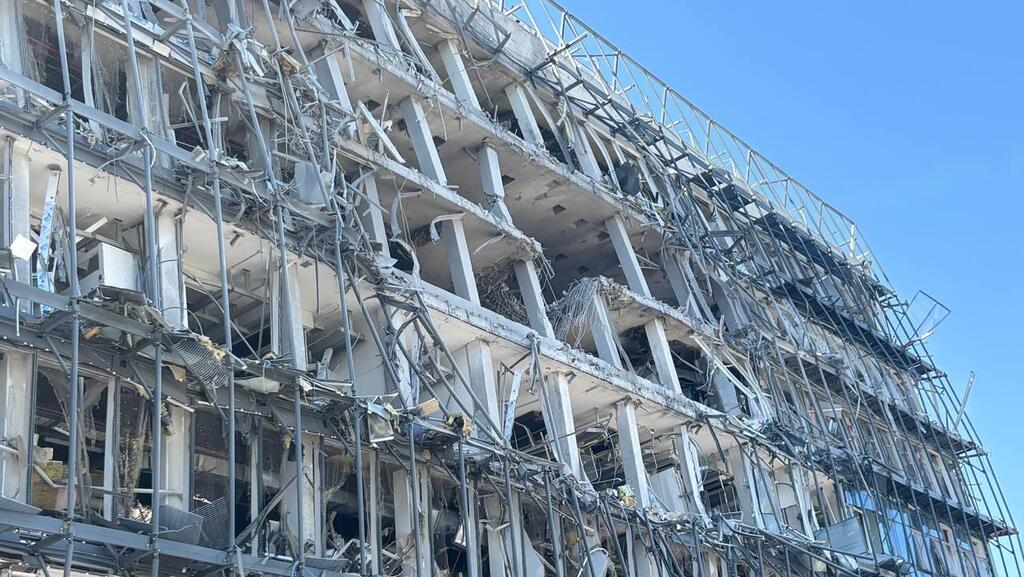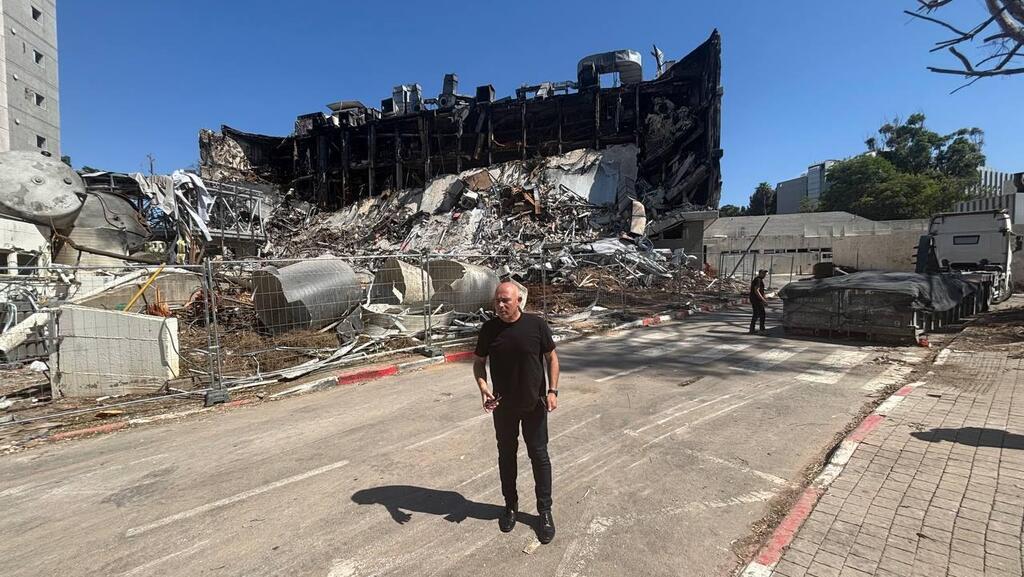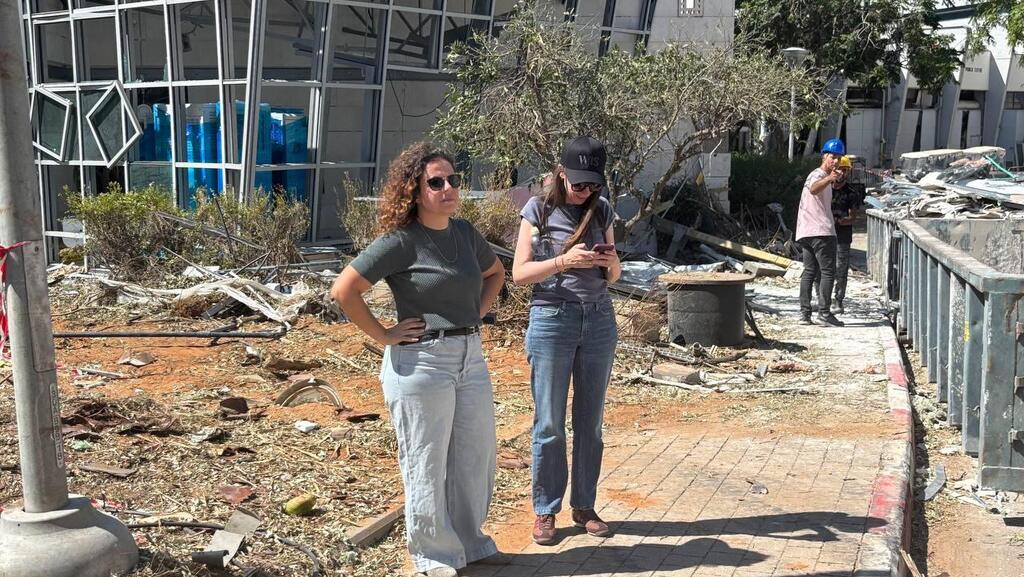Professor Alon Chen, president of the Weizmann Institute of Science, arrived at the research establishment in Rehovot as a student 30 years ago. On Thursday morning, four days after two Iranian missiles directly struck two of the institute’s research and science buildings, Chen toured the extensive destruction and stated: “The missiles completely erased decades of research; we will need to start from scratch.”
Despite the heavy damage caused by the ballistic projectiles, miraculously there were no bodily injuries. But the emotional toll remains. “It is sad and painful to walk among the scenes of devastation,” said Chen, who lives on campus. “Beyond the estimated $500 million in property damage, an enormous amount of research knowledge in cancer, brain, environmental and earth sciences has been wiped out.”
7 View gallery
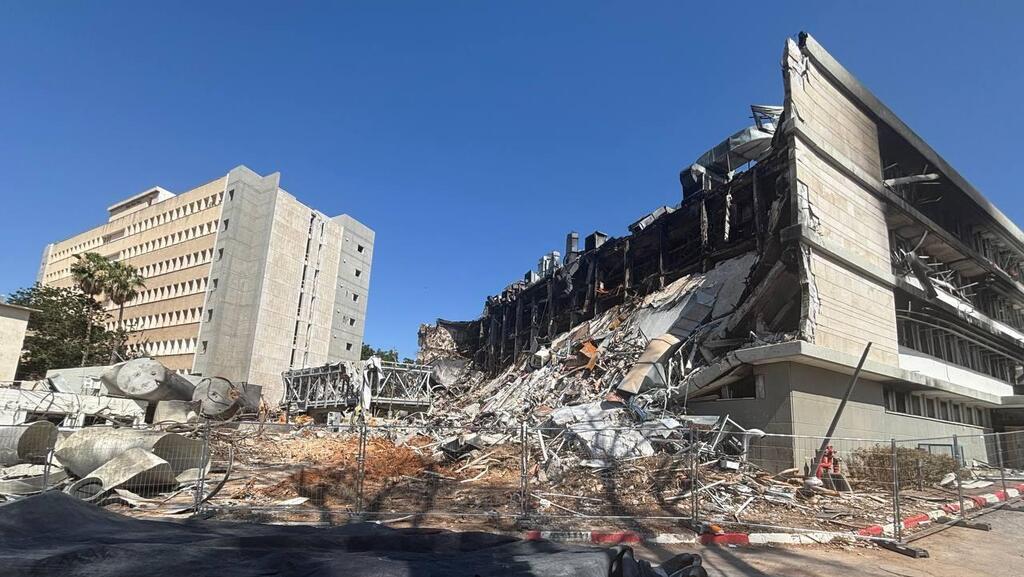

Ruins of Weizmann Institute research building after missile attack from Iran
(Photo: Meir Turgeman)
7 View gallery
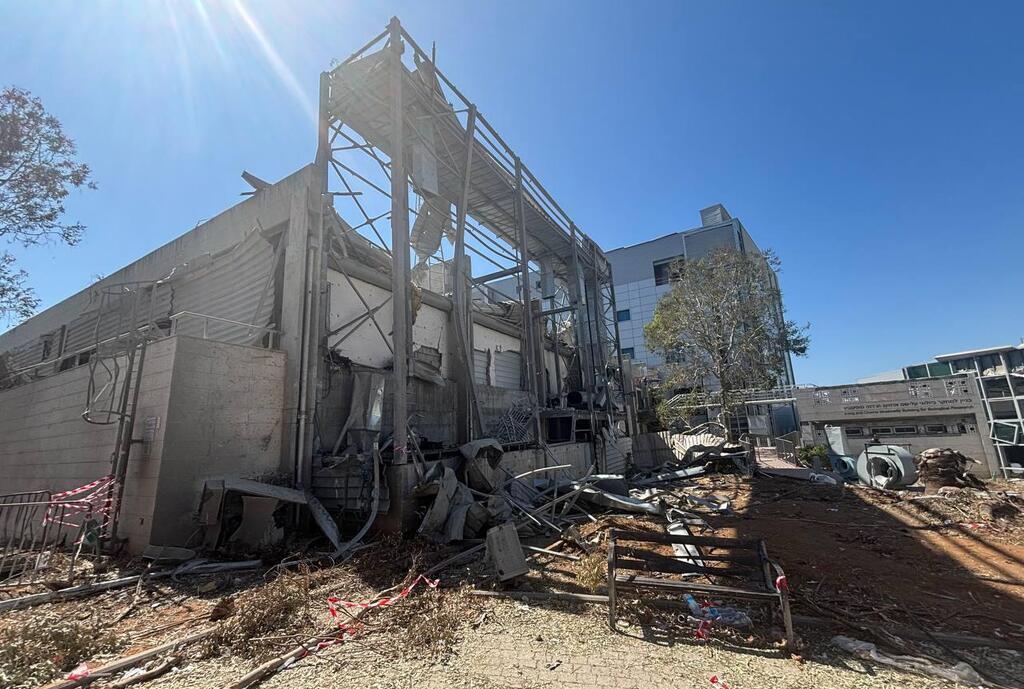

Weizmann Institute of Science building struck by Iranian missile
(Photo: Meir Turgeman)
Professor Dan Yakir, recipient of the Israel Prize in Earth sciences, geology and atmospheric science, stood in shock in front of the building that was his life’s work in the past decade. “Until now, the construction cost was approximately $150 million,” according to Yakir. “This building was built to the most advanced standards—laboratory infrastructure and equipment. In the first days, I just cried when I saw the destruction.”
Approximately 400 meters separate the two research buildings that were destroyed. The shockwave also ruined research laboratories and apartments where students from around the world lived. Two hundred students and researchers were evacuated to Kibbutz Ma’ale HaHamisha in the Jerusalem hills; some left Israel through the Taba border to Egypt, and from there flew to their home countries.
“We heard the siren, went into the shelter, seconds passed—and there was such a loud boom. I realized it was in our neighborhood at Weizmann,” recalls Dr. Tslil Ast from the Department of Biomolecular Sciences, who lives in a building adjacent to the institute, adding: "We got WhatsApp messages saying ‘catastrophe at Weizmann.’ From the photos, I understand my lab is relatively intact, but there is massive damage in other labs and buildings.”
Standing in front of the immunology lab that took a direct hit from one of the Iranian missiles, Asti added: “Hours later I came to see if my lab survived. It feels sad—such a beautiful campus dedicated to research to help humanity. Yet, I can see people rising from the ruins.”
She is most distressed about the loss of research knowledge accumulated through years of hard work. “The most valuable resource of the Weizmann Institute, aside from property, are samples that have been stored for decades in labs for scientific research—and all of it is gone, with no backup,” she explained. “These are samples donated by people, samples we received from hospitals to study the history of disease. Research infrastructure was damaged; devices built over years were destroyed.”
'We can cope with the financial damage—the pain is from the scientific damage and the loss of knowledge'
“We are a community of students and researchers from around the globe—some looked to leave, others stayed," she added. "We are still trying to process the destruction. We began working to save whatever we could just hours after the missiles fell. Mainly, it was critical to save samples stored in special refrigerators at minus 89 °C, and others preserved in liquid nitrogen containers at minus 200 °C," she said.
Thousands of people, including students, doctoral candidates, researchers and administrative staff, are on the Weizmann campus daily. Yakir, chair of the steering committee for the new science research building that had been under construction for a decade, said that the construction of the research building "was in progress and was expected to be occupied in about six months. We’ve lost knowledge; we’ve lost biological samples accumulated over many years. We can cope with the financial damage—the pain is from the scientific damage and the loss of knowledge.”
7 View gallery
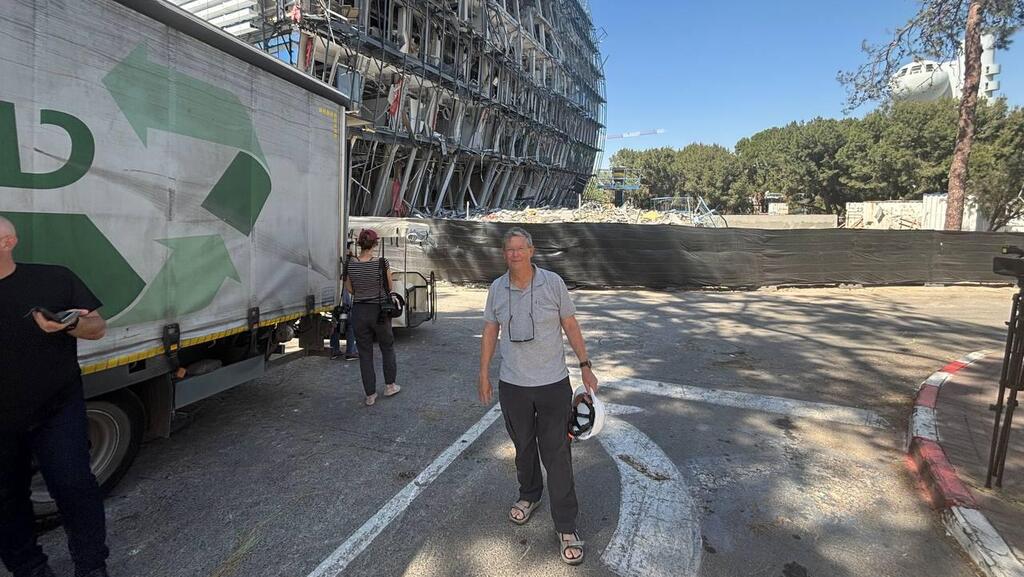

Professor Dan Yakir has spent the last decade building the research building destroyed by the Iranian missile
(Photo: Meir Turgeman)
Yakir discussed the special research going on in the new building. “In the science building, there were to be the world’s four largest microscopes, for which special infrastructure was built. It is a unique and exceptional building in Israel and worldwide. Ultimately, biomedical research takes years to collect samples from patients with rare diseases, to process them, and to study until results and therapies are achieved. It is erasing decades of accumulated knowledge and returning to square one. A great deal of knowledge lies buried in the rubble; the damage to knowledge is enormous,” he said.
Get the Ynetnews app on your smartphone: Google Play: https://bit.ly/4eJ37pE | Apple App Store: https://bit.ly/3ZL7iNv
Chen said: “This is my home; my children were born and raised here. My field is emotions—I am a brain scientist. Researchers at the Weizmann Institute do things for the sake of the world and humanity, not just for the Institute or the State of Israel. We produce a wide field of knowledge and bring healing through medications based on our research that truly save lives.”
Despite the sorrow and difficulty, Chen delivered a message of hope. “The most important thing is that we have a strong community here. We will reconstruct and rebuild anew. We will continue to lead the world in cutting-edge research. This is just a small winged blow. Scientists and researchers are determined people who do not break—people who pulled samples from a burning building. We are the best at generating outstanding knowledge for the future of humanity, and we will continue to do so for the sake of humanity.”



